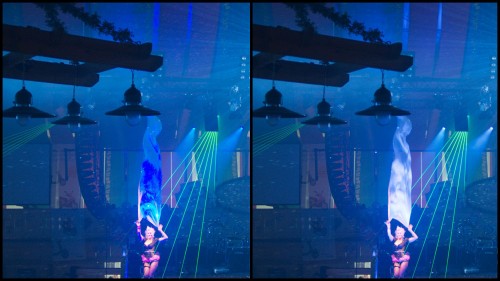FilmLight’s new Baselight 5.0, to be unveiled at NAB2016, introduces a completely fresh look to colour control and is the most sophisticated yet intuitive grading tool ever presented to professional colourists and creative artists across the production process. The latest release introduces a new set of tools to optimise both HDR grading and extended colour gamut.
FilmLight has been a leader in HDR picture finishing for several years, capitalising on Baselight’s flexible and robust rendering engine to provide support for a wide range of HDR mastering techniques. Baselight was the first colour correction system to enable Dolby Vision mastering, and has continuously worked closely with other leaders in HDR technology such as Sony, NHK and the BBC to implement and improve upon alternative HDR mastering methods and delivery systems, including SMPTE ST-2084 and ARIB STD-B67.
High Dynamic Range (HDR) displays and projectors are now more widely available, and with the blacker blacks, glinting highlights and wider colour gamut come challenges for mastering while continuing to support existing TVs and cinema projectors. At NAB2016, FilmLight will demonstrate its industry-leading HDR technologies and workflows, using its range of products – alongside different 4K HDR-enabled mastering displays – to illustrate the creative opportunities of HDR grading.
“There are a few hurdles when grading and mastering in HDR,” said Wolfgang Lempp, CEO of FilmLight. “You have to give the colourist an intuitive way of interacting with the extra dynamic range, to grade in a way that is natural. You also want to minimise the extra effort of grading for other deliverables, while matching as closely as possible the high quality, HDR image viewing experience. The Baselight 5.0 toolset meets these challenges head on.”
Introducing the Base Grade
Developed for Baselight 5.0 is the Base Grade, which accurately mimics the way the eye appreciates colour. Providing an instinctive and predictable response to image adjustment controlled by base, exposure and tint, the new operator is the natural choice for grading HDR images. Exposure zones can be adjusted independently without compromising the overall balance of the image. Base Grade introduces a more photographic approach to colour grading, with exposure stops and printer lights representing accurately what a DoP would expect to see.
Martin Tlaskal, Lead Developer, comments: “Base Grade is the most advanced creative grading operator we have developed to date. The ‘feel’ for the user is the same no matter what the choice of working colour space. It works in a perceptually linear space, so it’s perfect for grading RAW formats, OpenEXRs and other scene-referred data for both HDR and standard range displays.”
Enhanced Colour Management
Baselight 5.0 combines this new and intuitive way of working with important boosts to FilmLight’s unrivalled colour management and extended HDR capabilities. It introduces the concept of colour space ‘families’, which simplify the deliverables process for distinct viewing environments: television, cinema, mobile devices and so on.
Multiple delivery viewing formats add more complexity and time to the finishing process and this powerful feature removes the uncertainty by automatically selecting the correct rendering transform. Once the grade is signed off, Baselight will select the most appropriate transform in the family to ensure that deliverables are optimised for each destination.
New Gamut Optimisation
Furthermore, the new gamut optimisation feature in Baselight 5.0 provides essential and simple-to-implement gamut mapping for wide dynamic range images, which form part of the new generation of HDR displays.
“The new range of high-end cameras are extremely powerful, but this also means they’re capable of capturing all sorts of colours that could never be displayed on current television screens,” explained Lempp. “Our new gamut optimisation feature makes this simple to fix, providing natural gamut mapping for deliverables.”
Where an HDR image results in colours outside a standard colour gamut, the new gamut compression feature sensitively brings it back in, compressing the outer volume of the gamut without affecting the inner volume. Bright, saturated colours won’t clip or destroy the image. The process is much faster and the colourist can simply check the final results and make changes where necessary, allowing more time to be spent on perfecting the image.
FilmLight is introducing its innovative new approach to grading on booth SL3829 at NAB2016, 18–21 April in Las Vegas.




